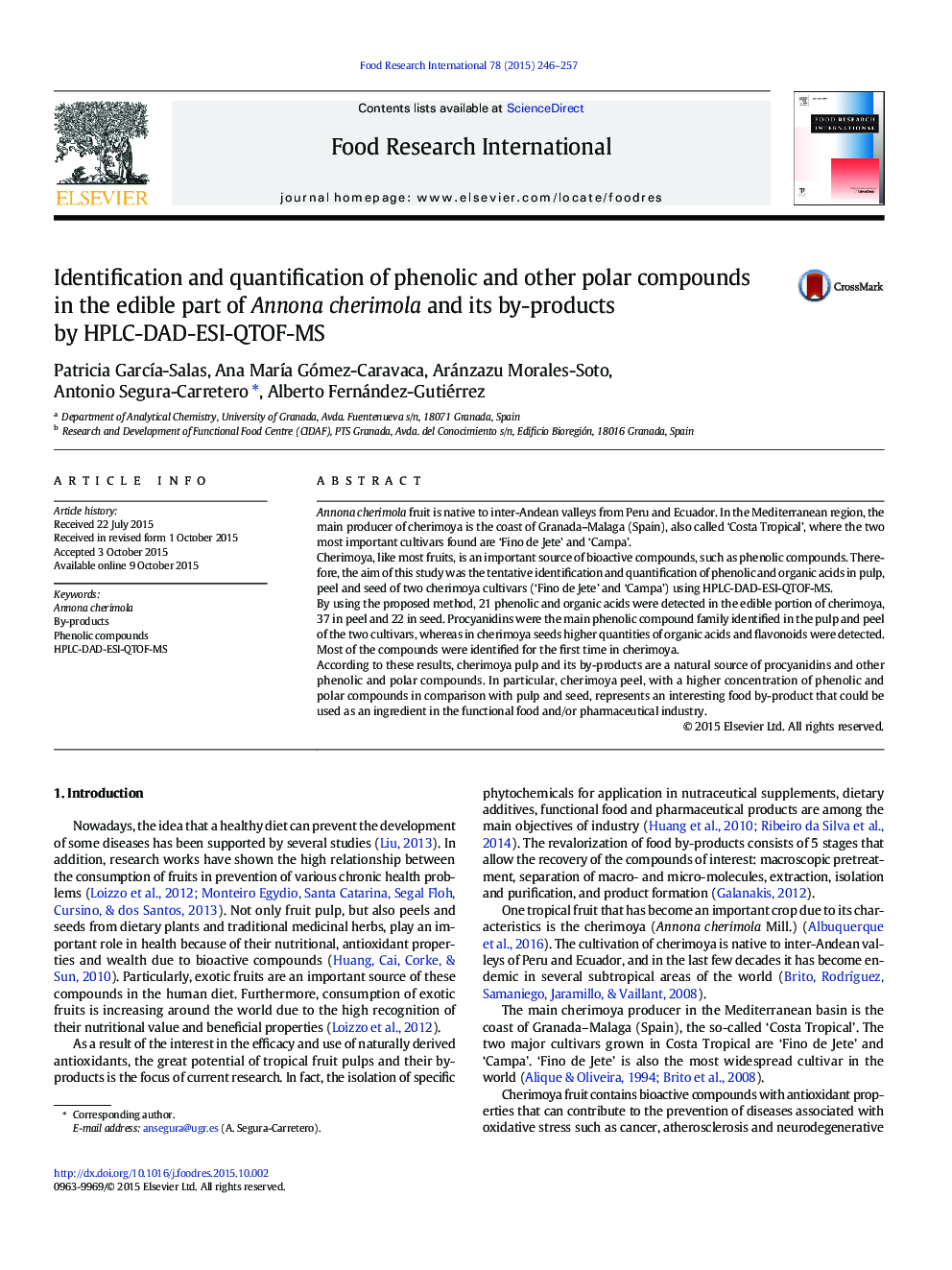| Article ID | Journal | Published Year | Pages | File Type |
|---|---|---|---|---|
| 4561316 | Food Research International | 2015 | 12 Pages |
•First time that an exhaustive determination of phenolic compounds in cherimoya pulp and its by-products have been done.•Most of the compounds identified were catechins and procyanidins.•21 compounds were identified in cherimoya pulp, 37 in peel and 22 in seeds•All peel and seed compounds of cherimoya have been determined for the first time
Annona cherimola fruit is native to inter-Andean valleys from Peru and Ecuador. In the Mediterranean region, the main producer of cherimoya is the coast of Granada–Malaga (Spain), also called ‘Costa Tropical’, where the two most important cultivars found are ‘Fino de Jete’ and ‘Campa’.Cherimoya, like most fruits, is an important source of bioactive compounds, such as phenolic compounds. Therefore, the aim of this study was the tentative identification and quantification of phenolic and organic acids in pulp, peel and seed of two cherimoya cultivars (‘Fino de Jete’ and ‘Campa’) using HPLC-DAD-ESI-QTOF-MS.By using the proposed method, 21 phenolic and organic acids were detected in the edible portion of cherimoya, 37 in peel and 22 in seed. Procyanidins were the main phenolic compound family identified in the pulp and peel of the two cultivars, whereas in cherimoya seeds higher quantities of organic acids and flavonoids were detected. Most of the compounds were identified for the first time in cherimoya.According to these results, cherimoya pulp and its by-products are a natural source of procyanidins and other phenolic and polar compounds. In particular, cherimoya peel, with a higher concentration of phenolic and polar compounds in comparison with pulp and seed, represents an interesting food by-product that could be used as an ingredient in the functional food and/or pharmaceutical industry.
